

Past Event
Content from the Brookings Institution India Center is now archived. After seven years of an impactful partnership, as of September 11, 2020, Brookings India is now the Centre for Social and Economic Progress, an independent public policy institution based in India.
The developments in the global economy have given India a golden opportunity to be bolder than we currently are in terms of increasing public investment, a Brookings India roundtable found.
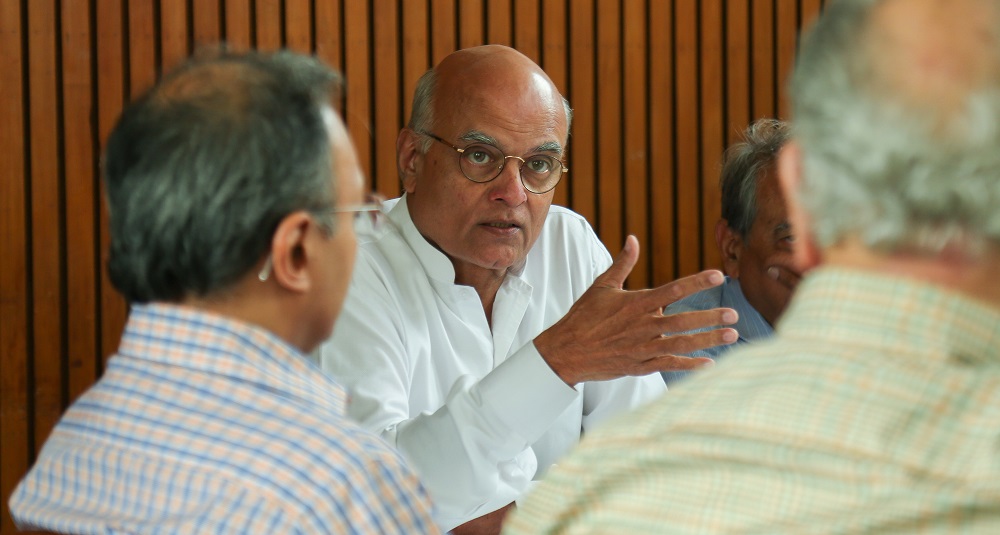
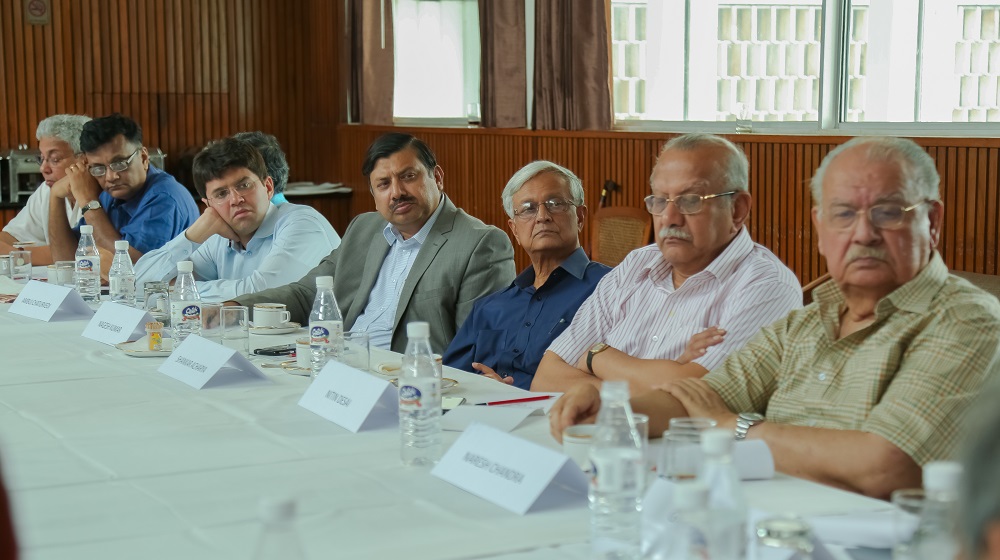
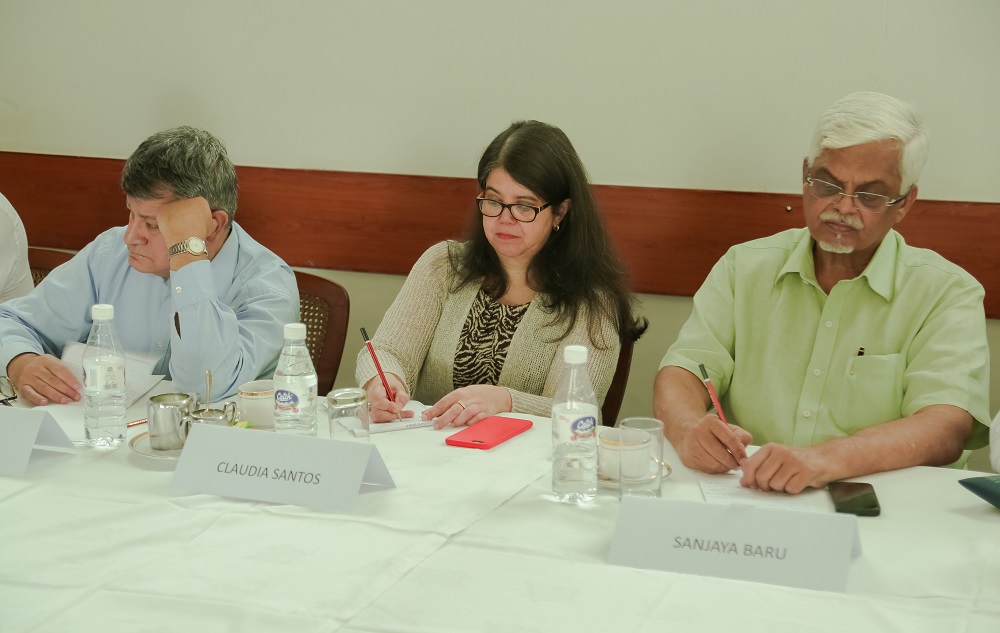
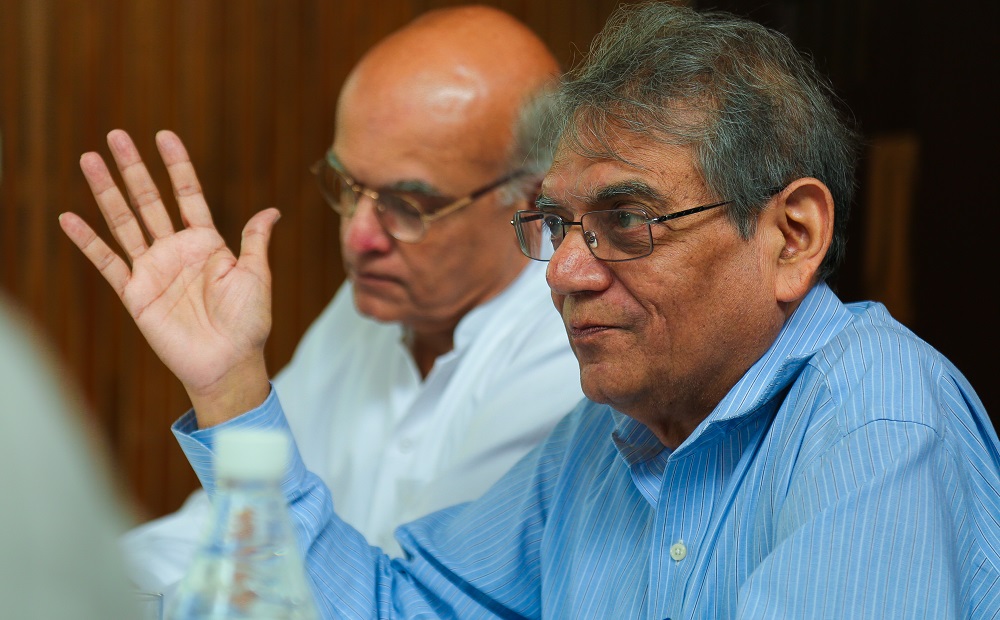
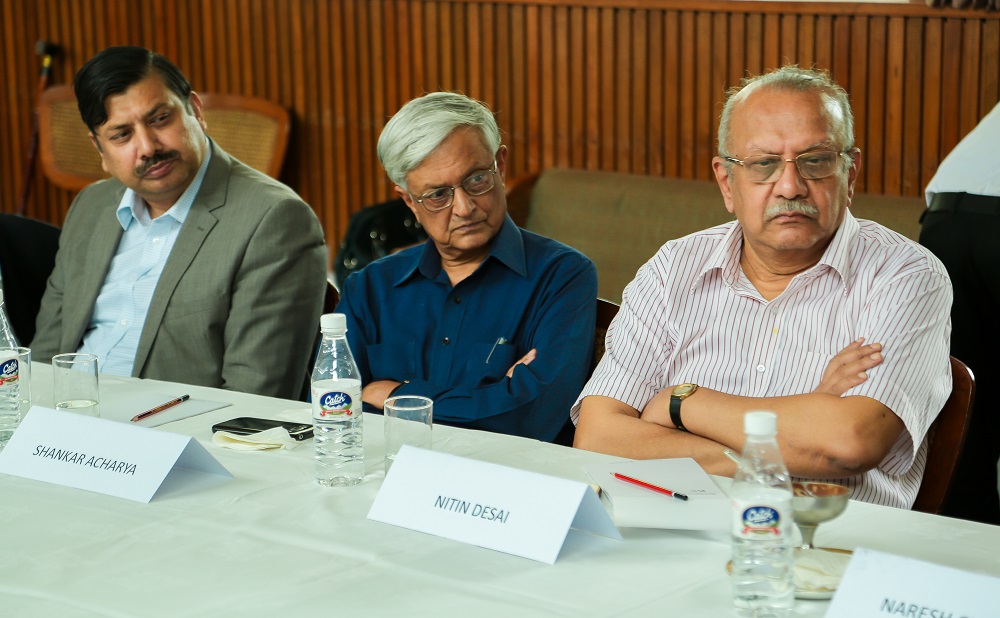
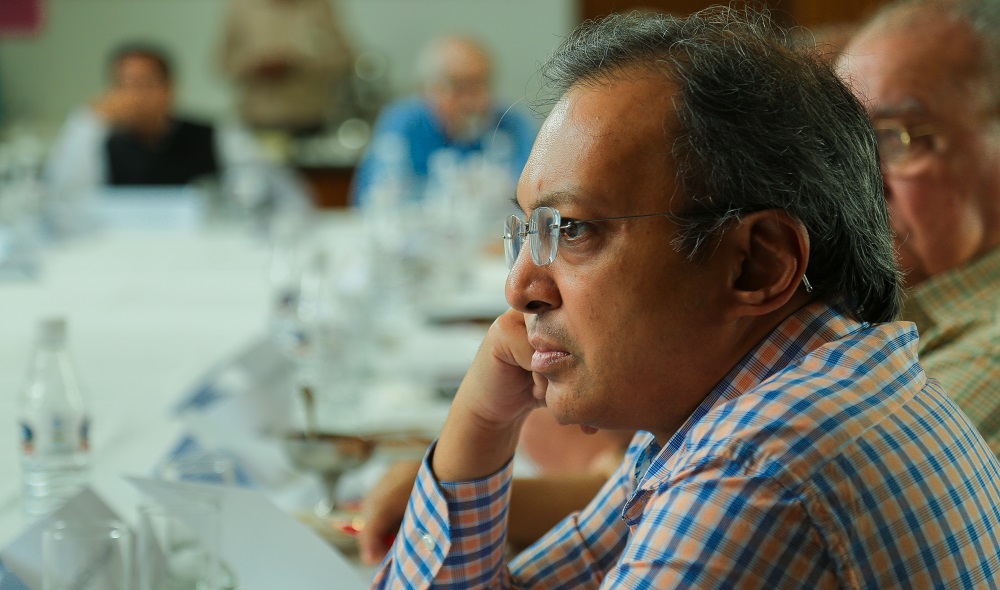
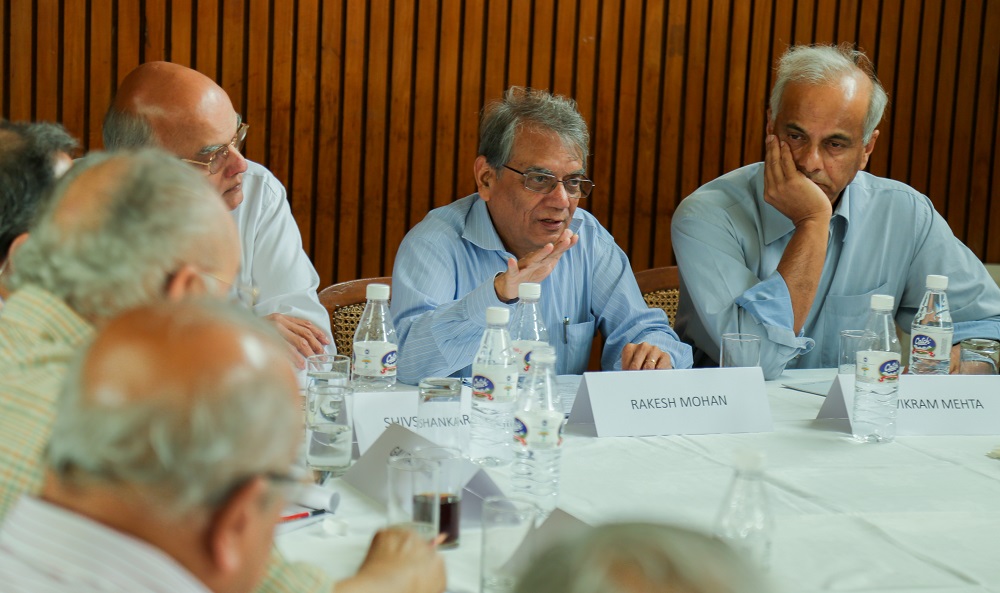
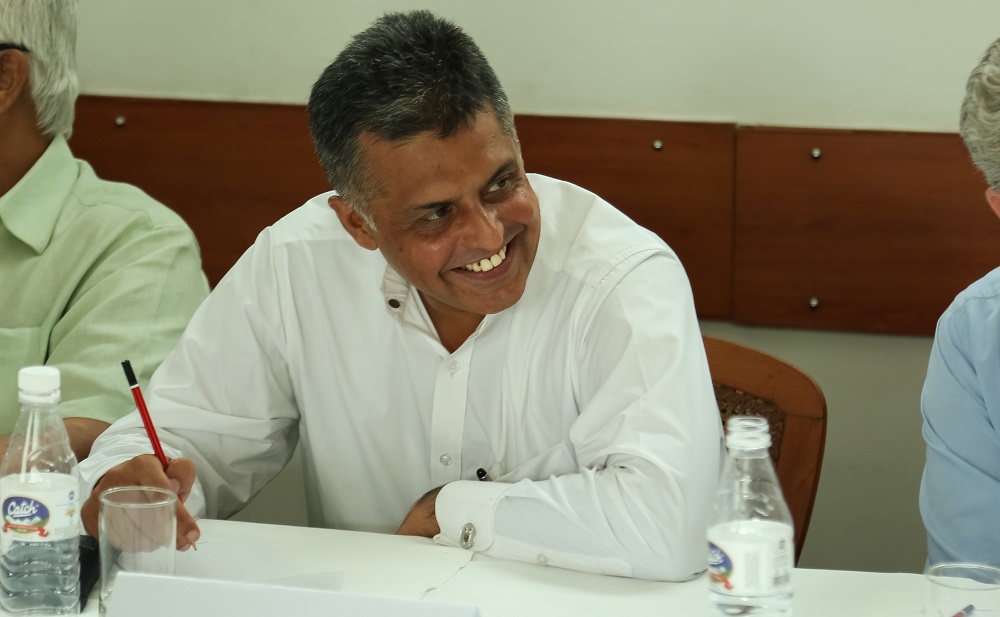
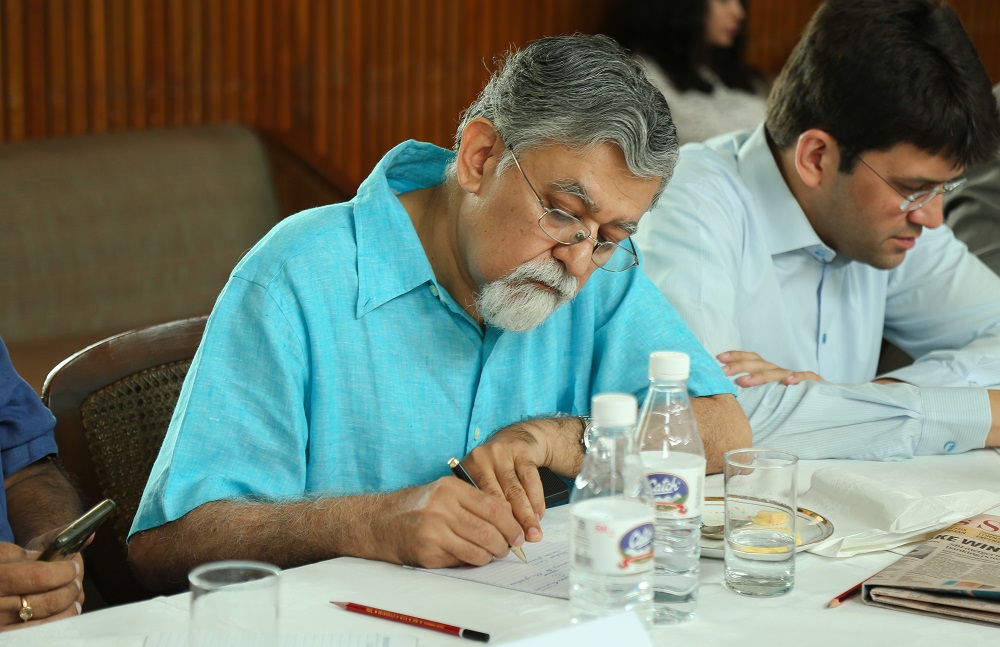
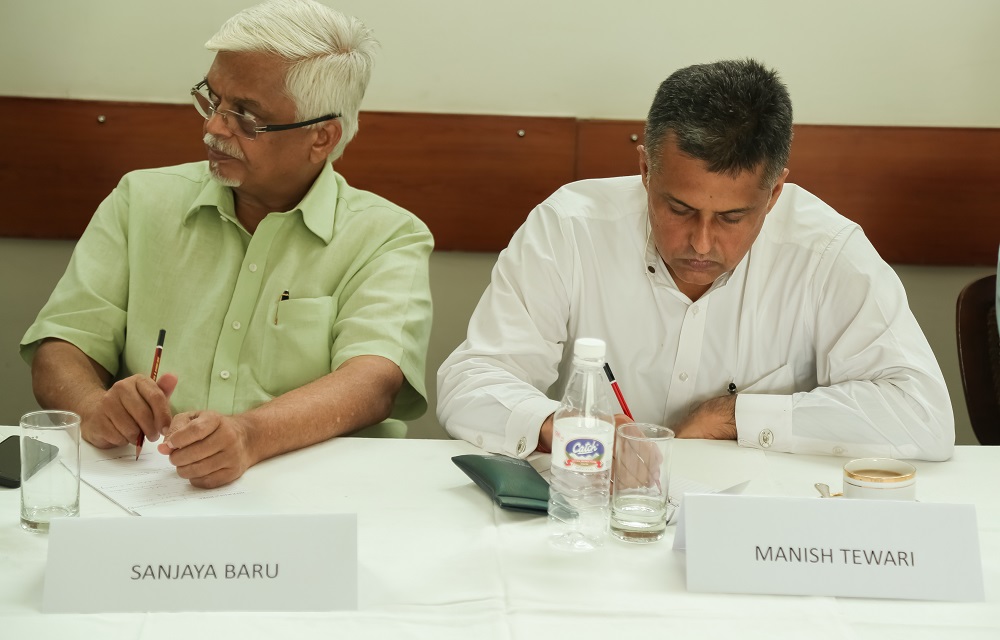
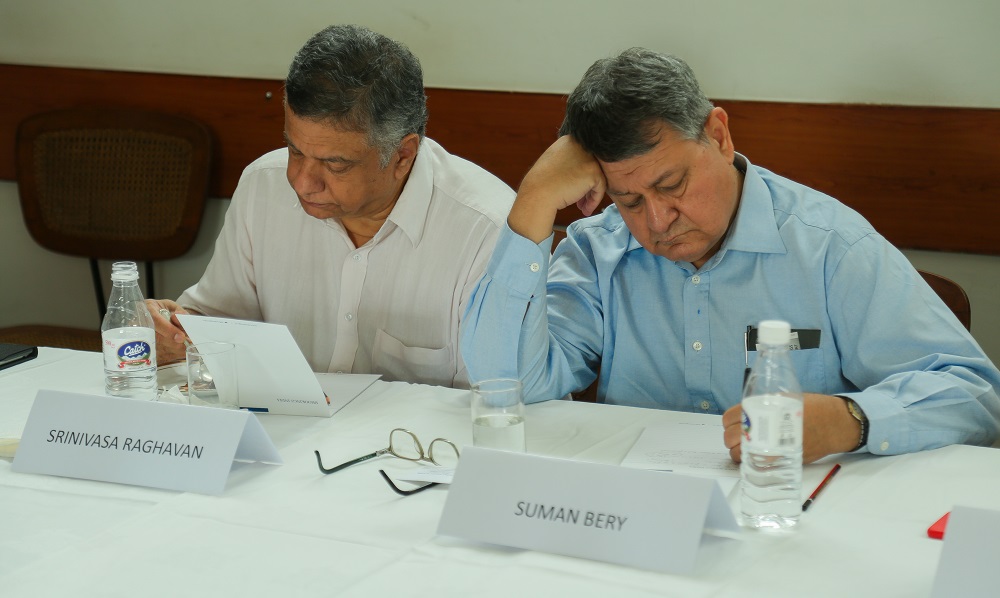
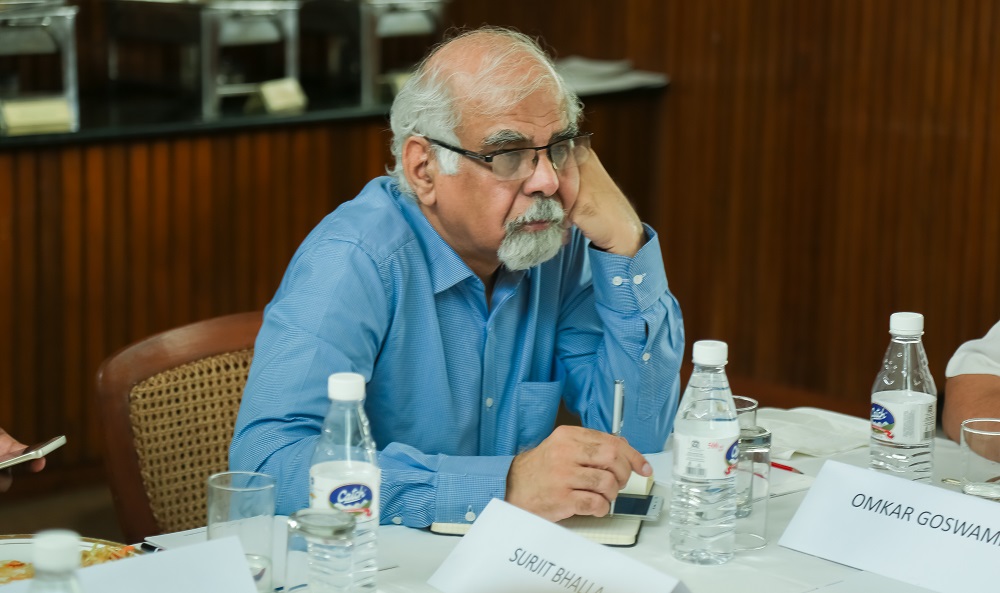
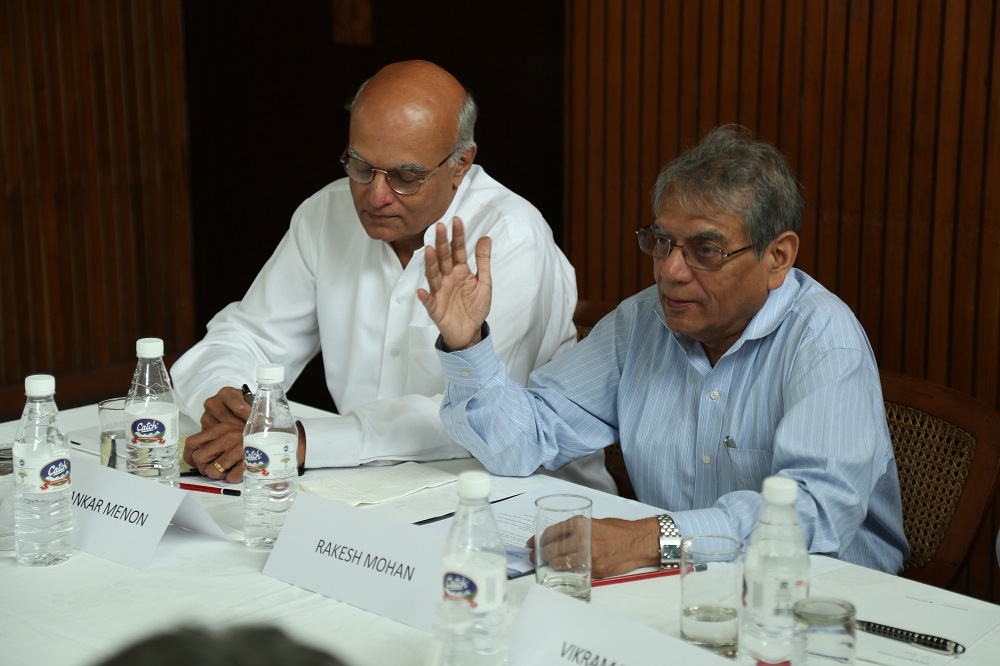
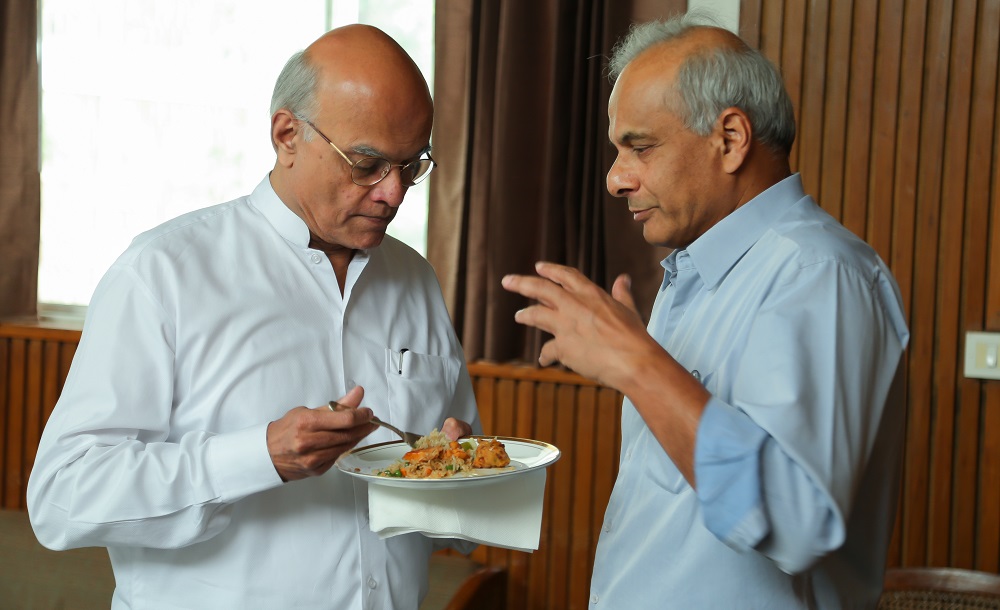

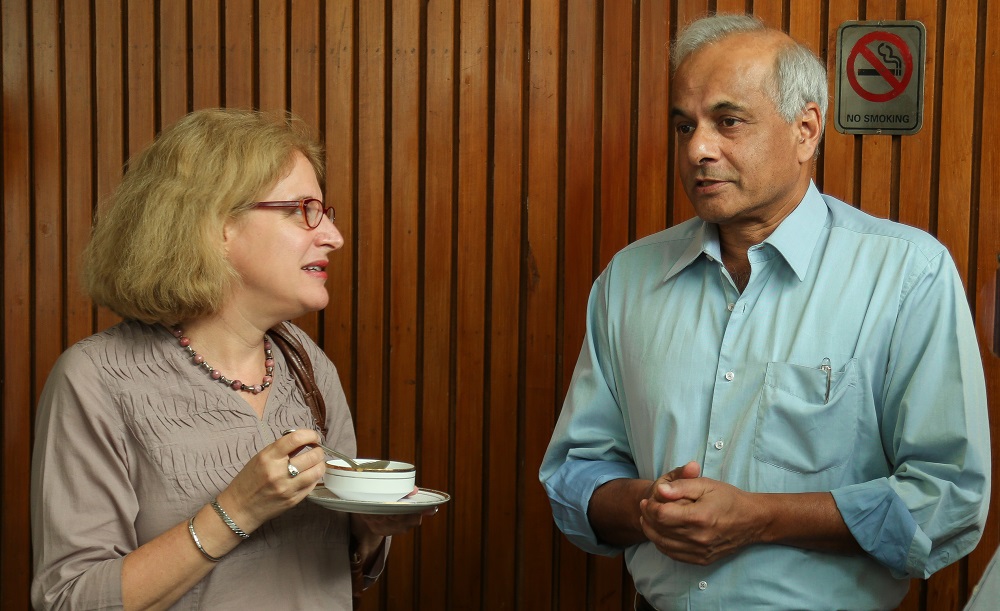
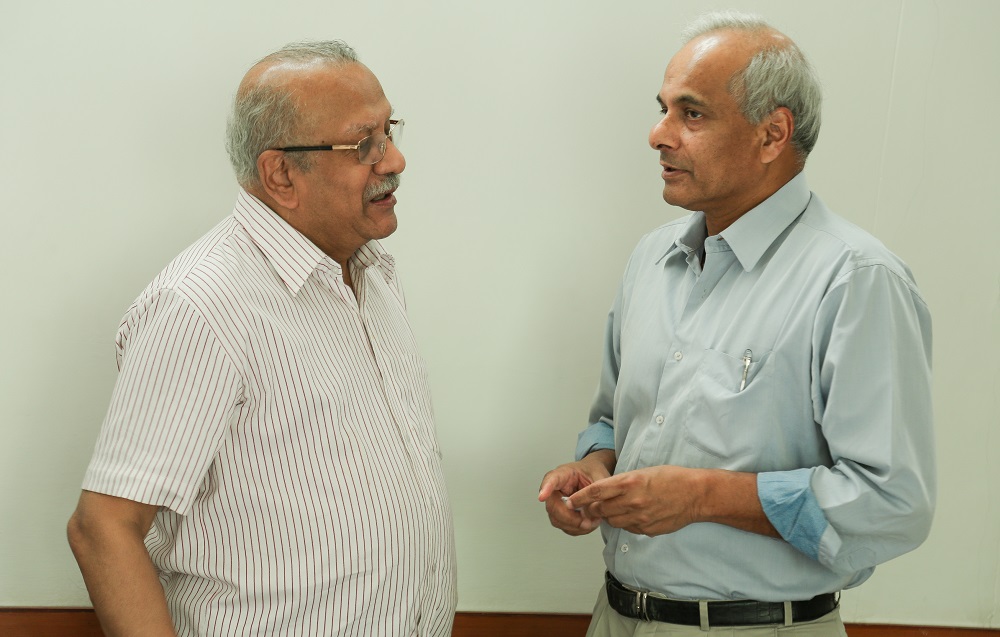
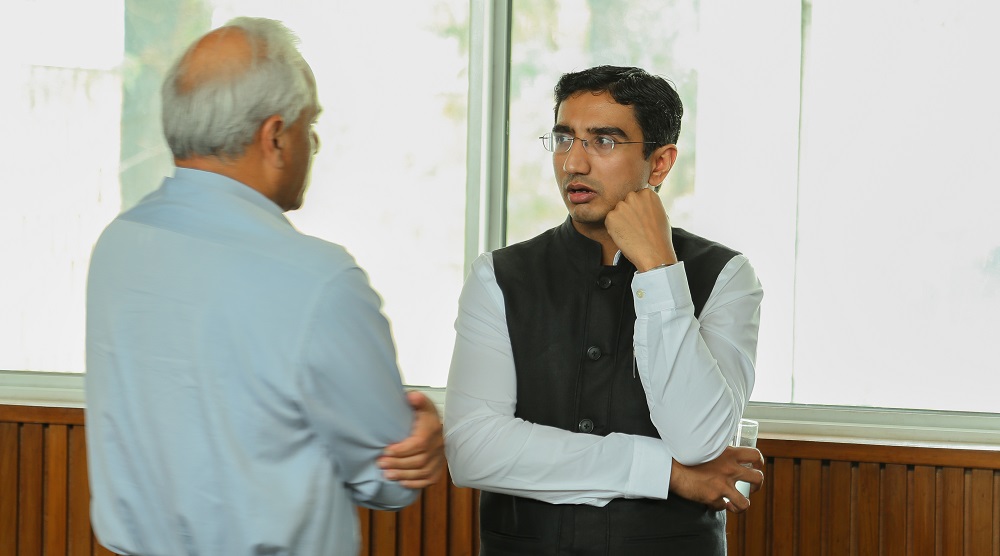
As part of a regular private roundtable discussion series on Foreign Policy, Brookings India hosted a discussion on Developments in the Global Economy: How do they Impact the India Growth Story. The discussion featured Dr. Rakesh Mohan, Distinguished Fellow at Brookings India and former Executive Director for India to the IMF and Deputy Governor of the Reserve Bank of India. The discussion was moderated by Ambassador Shivshankar Menon, Distinguished Fellow in Foreign Policy at Brookings and India’s former National Security Advisor and Foreign Secretary.
Global Political and Economic Scenario
The 2008 financial crisis fell short of a great depression, but nevertheless resulted in a great recession which the world is still recovering from. It was soon followed by the European debt crisis which Europe is also still recovering from. However, what has been new in the last couple of years is the slowdown of BRICS countries which make up the biggest emerging markets in the world. The emerging markets weren’t affected much by the recession, but the year 2014-15 was bad for their economies. Brazil has been highly negative in terms of economic growth and has been vexed with domestic political problems. Russia was hit partly because of the fall in energy prices and partly because of geopolitical situations arising out of the Ukraine crisis. A new feature in the last couple of years has been the Chinese slowdown. India has also slowed down but less than the other emerging markets. The fall in global commodity prices has been a problem for many countries but has impacted Africa and Latin America more severely than others. India is in a relatively sweet spot. The fall in oil prices has seriously affected all the oil exporters – Russia, Africa, the Middle East and Venezuela. India being a net importer of both oil and commodities, has benefited most from the falling prices of these commodities. Venezuela, a country with one of the largest oil reserves in the world is on the brink of hunger, which is rather surprising.
The current status is that North America has witnessed ongoing recovery but it is slower than expected. While the US Federal Reserve had forecasted normalisation of growth rates by 2017, the estimates have had to be revised repeatedly. The U.S. unemployment rate is now less than five percent, a best case scenario given the conditions. However, even an unemployment rate of 4.9% is not pushing up inflation, which remains below the targeted 2 percent. Whenever the U.S. tries to begin normalization of monetary policy by increasing the policy rate, the dollar appreciates and dampens the U.S. economy. Therefore, chances of the U.S. economy normalizing in the near future are low. European economies are still attempting to recover from the debt crises and appear shaky. Brexit is also a symptom of general uncertainty prevailing over the world in the last few years. The important thing to note is that economists all over the world failed to foresee these various crises. And this is a cause for concern.
Oil is an important commodity to consider in order to understand global markets. The oil demand from receiving countries has been negative. The growth rate of oil demand has depreciated from 2% to 1% from 2014 onwards. Chinese demand has been a major factor in this depreciation. In the last 35 years, the change in oil demand has been driven by China’s doubling of demand every decade. The Chinese oil demand has gone up by a factor of five in the last 20 years. U.S oil production went up from about 7.5 million barrels to 11.6 million barrels between 2010 and 2014. The slowdown in Chinese demand for oil in recent and the increase in U.S. production levels have been the main drivers of crashing oil prices. Moreover, with the lifting of sanctions on Iran, oil prices will continue to be low.
The consumption and production of metals has also been driven by China. In 2000 it accounted for less than 10% of the total metal consumption which increased to almost 50% by 2015. In recent times, although the magnitude of Chinese demand hasn’t come down, the growth rate has stabilized. The same trajectory is applicable for coal as well. The Chinese consumption has gone up from 25% of the global share to 60% of the total global consumption in 15 years.
There is a lot of negative perception in the world about the Eurozone and the Euro. Excluding a few countries such as Germany and some Scandinavian countries, we are seeing some long term structural effects. We are seeing a completely unviable social system, very low productivity, lack of competitiveness, and a far more fundamental issue of migration. We have seen unprecedented levels of migration to Europe in the last few years, which might fundamentally change the way Europe sees itself. The Eurozone is suffering politically as well as economically because of dwindling economies and high levels of migration. There are slim chances of the Eurozone succeeding as a common region, unless the Euro as a common currency is scrapped. In the absence of flexible labour markets, flexible movement of people and fiscal policies, the Euro as a common currency and the Eurozone is unlikely to survive.
We are living in a world that none of us have seen, the one of zero inflation. When we incorporate the negative inflation into our thinking, the negative interest rates are no longer negative. The real interest rates are quite high. What we had prior to 1950 was long-term stability in prices but short term fluctuations. We are not seeing short term fluctuations. There is a steady downward decline. The world is not quite sure how to deal with this steady decline.
Impact on India
Given the global scenario, India is in a sweet spot for several reasons. One, with fall in oil prices and India being a net importer of oil, we stand to gain in terms of trade. Two, on a macro basis we have a low fiscal deficit, low inflation, macro under control and a decent fiscal consolidation. Therefore, this is a golden opportunity to be bolder than we currently are in terms of increasing public investment in infrastructure. Even though our rate of gross investment has come down from 38% of GDP to around 31% currently, we have a GDP growth rate of about 7.5% according to national accounts. We seem to be poised to continue at a 7% growth rate in the near future, which is very positive. We can take advantage of low commodity prices, low capital input prices, low interest rates etc. to step up the investment rate in both infrastructure and manufacturing to achieve an even higher growth rate in the coming years.
However, exchange rate management needs to be very efficient in order to effectively use this golden opportunity. There is a need for improvement in the utilisation of funds for development of domestic industries and also in the way we manage exchange rates. We need to maintain a competitive real exchange rate so that domestic industries do not suffer from potential appreciation. The banking system is exhibiting significant stress with the increase in NPAs. It is imperative that this is dealt with quickly so that banks can contribute to higher growth through rising credit. Infrastructure investments will have to be made mainly by the public sector for some time since private sector firms’ balance sheets are highly stressed and hence are strapped for cash and resources. We need to focus on increasing the capacity of public sector organisations to deliver. In order to get growth to take off and credit to get going, banks need to aggressively clean up their balance sheets.
With stagnation in the North Atlantic, we have started to ‘look east’ for business, so it is the ideal time to also ‘act east’. The east is where the growth will be. Even in the situation that China continues to grow at 5-6% for the next few years, the rest of Asia could even grow at somewhat higher rates. The East Asian region constitutes a population of around 3 billion people with a GDP growth rate of 5-6% and per capita growth rate of 4-5%. We should be aggressive in looking east which means more action in the trade realm in the form of trade pacts and agreements. We could think of specific measures to export to the east, whether through inland measures and investment ports, shipping lines etc. in order to facilitate trade. Management of the real exchange rate more aligned to the East would also help. We also need to aggressively pursue ‘Make in India’ which has, until now, been restricted to sectors such as defence. We need to concentrate on widening it to other sectors such as manufacturing, particularly labour using manufacturing.
The Chinese slowdown also has important political implications. The Communist party’s legitimacy in China has so far been based on development and quick growth. Increasingly, we are seeing a shift in the Communist Party’s stance towards nationalism, as the economy slows down. We are therefore not likely to see a change in China’s assertive policies in our neighbourhood and on the global stage. Despite the economic slowdown, China’s stature in global politics is rising. Their willingness to take a stand and openly oppose India’s NSG membership is a solid example. The Chinese believe that their relative position is improving and therefore are willing to display their dominance. On the other hand, while the U.S. is not declining in global politics anymore, China is rising. This means that the gap is shrinking between China and the U.S. We can therefore expect more assertive policies from the Chinese establishment in the future. On our part, we need to decide what would be the tipping point for India, beyond which China’s assertiveness is unacceptable to us. As of now, the Chinese have done nothing to change the status quo on our borders or in what they say on our bilateral relationship. However, many believe that China is trying to achieve its objectives through Pakistan, through establishing closer relations with our neighbours and through international markets and institutions. We will have to ultimately decide our limits of acceptability.
In the international area, we are currently in a situation where no country, whether it is the U.S., China or both, can impose systemic supremacy over others or decide the world order alone. Several countries have blocking power today and there seems to be a loss of confidence in the liberal international order even in its makers and managers. Countries like India, Indonesia have to be careful in making political choices. Both the U.S. and China want India and other middle powers to align with them. However, middle powers can hedge, balance or bandwagon, working with both the US and China, and occupy the space in the middle. The Indian government senses the opportunities of exploiting this space but hasn’t been able to translate this into concrete policies yet.
Major global changes have not only affected the international political order but have also changed the course of global economic governance. Bretton Woods institutions such as the IMF, World Bank etc. are losing their pre-eminence. No one country can oppose or control the order leaving us hanging between changing world orders. On India’s part, the Indian government is still reluctant in raising its voice in organizations like the IMF. The reason for this reluctance is that we don’t have the required capacity to complement the issues that we raise. India’s unclear political views are also a hindrance to greater Indian influence in these organizations.
Like other products of the Brookings Institution India Center, this report is intended to contribute to discussion and stimulate debate on important issues. The views are those of the author.
Event Annonucement
Brookings India is hosting a private roundtable discussion on Developments in the Global Economy: How do they Impact the India Growth Story. The discussion will feature Dr. Rakesh Mohan, Distinguished Fellow at Brookings India and former Executive Director for India to the IMF. The discussion will be moderated by Ambassador Shivshankar Menon, Distinguished Fellow in Foreign Policy at Brookings and India’s former National Security Advisor and Foreign Secretary. This is part of our monthly series of the Brookings India Foreign Policy Roundtables with Ambassador Menon. The discussion will revolve around global issues such as a new American leadership, downturn in the Chinese economy, Brexit, turmoil in the Middle East, and the economic implications of these issues on India.
Entry by invitation only.

Rahul Tongia, Anurag Sehgal, Puneet Kamboj
2020
Online Only
3:00 am - 4:40 am IST

Saneet Chakradeo
August 18, 2020